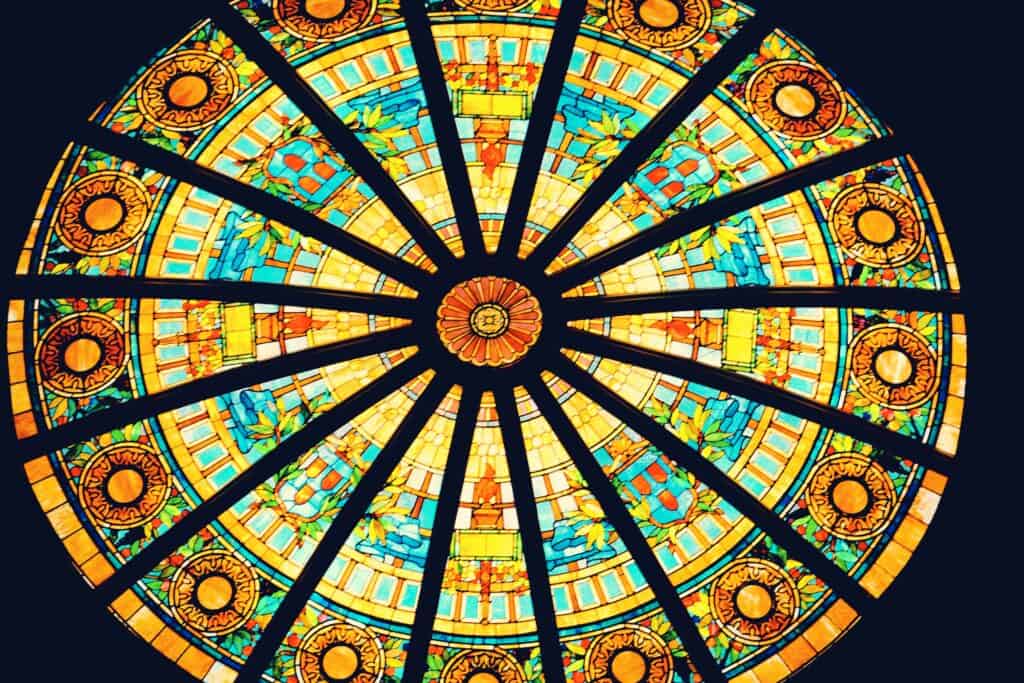Two Unique Maps of the Maya: Astrology and Human Design

Frameworks for seeing and understanding the patterned reality we inhabit
Astrology and Human Design both start from the same point: our unique position on Earth relative to the sky at the moment of birth. Each uses the exact time, date, and location to create a map that captures this celestial snapshot. Both operate through a form of imprinting, the recognition that the signature of a specific intersection of time and space becomes embedded within us, influencing how our lives unfold.
Both systems are based on the same astronomical principles. They are geocentric, or Earth-centered, views of the sky, mapping it as seen from the location where someone is born. Both use the tropical zodiac, which is linked to the equinoxes and solstices. They also both use the true lunar nodes calculation. Additionally, they rely on the same astrological ephemeris, which are tables of planetary positions at specific times. In short, Human Design and astrology share much of the same data and calculation methods, but develop into different frames of reference from there.
Here, it is worth remembering the distinction Alfred Korzybski made: the map is not the territory. Plato also spoke of the cave, where shadows on the wall are mistaken for reality itself. Astrology and Human Design are not reality itself, but symbolic maps, lenses for seeing the patterned fabric of the Maya. Both describe how each of us filters the full spectrum of life in the universe through our specific place on Earth. They show how cosmic influences are translated into lived experience.
Astrology gives us the natal chart, a circle divided into twelve houses and signs, with planets arranged around its wheel. Human Design provides us with the BodyGraph, a network of nine centers, 64 gates, and 32 channels based on the same date, time, and place of birth, but mapped through a completely different geometry. Both attempt to describe aspects of the human experience, yet they do so from different vantage points, through different logic, and offer different insights.
Astrology: The Multiplicity of Life
Astrology is one of humanity’s oldest sciences. Its origins trace back to Babylonian skywatchers over two thousand years ago, who first connected planetary cycles with omens and earthly events. From there, it spread into Egyptian, Greek, Indian, Persian, and Arabic traditions, evolving into the diverse practices we see today. Over time, it appears to have grown through observation, improved empirically, and been handed down by small groups of scholars, priests, and philosophers.
It is important to note that a natal chart is not the person themselves but a symbolic representation of the potentials and timing of a life in motion in the process of becoming. In the traditional view, the twelve houses do not represent psychological traits but are containers or categories of life circumstances, from the body and possessions to family, partners, career, and death. While the birth chart can reflect aspects of the inner self, it can also reveal external roles, events, and conditions a person might encounter along their journey through life.
Astrology has always focused on cycles. The daily rising and setting of planets, the yearly return of the Sun, the 12-year growth cycle of Jupiter, and the 29-year developmental cycle of Saturn all serve as timing mechanisms that bring a sense of cosmic rhythm to life and enable astrologers to interpret past events and sometimes predict future ones. Through transits, progressions, returns, and other timing methods, astrologers can provide meaningful insights into when certain themes are likely to emerge.
Astrology encompasses both mundane and psychological aspects, revealing external life circumstances as well as internal patterns that correspond to them. It is also more a collection of varied traditions rather than a single unified system, including Hellenistic, Vedic, Uranian/Symmetrical, medieval, modern, psychological, and evolutionary. Each tradition offers its own perspectives, meanings, and techniques. This diversity allows us to view life from many angles, but it also means that two astrologers may rarely interpret the same chart in exactly the same way.
From the perspective of Human Design, astrology primarily works with the personality imprint at the moment of birth, which is the unique consciousness imprint of the reincarnating Personality Crystal. This makes astrology well-suited for describing life from the standpoint of the conscious self, including its thoughts, encounters, challenges, and timing.
Human Design: Refining the Astrological View
While astrology has an ancient history, Human Design is a modern synthesis. It was revealed to Ra Uru Hu (born Robert Alan Krakower) in 1987 during an intense eight-day mystical experience on the island of Ibiza. What came through was described as a “voice” transmission, a received system, rather than a result of gradual empirical observation.
Human Design is not separate from astrology, but a type of astrological system that refines and simplifies its inheritance. It begins with the same planetary positions, calculated in the same way an astrologer would, using the tropical zodiac, the true node calculation, and the same ephemeris. Then, it adds another imprint, calculated at 88 degrees of solar arc (about three months) before birth. This earlier imprint, called the Design, represents the body and unconscious form.
Together, the conscious Personality imprint at birth and the unconscious Design imprint before birth form the BodyGraph. While astrology describes life from the perspective of the conscious self, Human Design places that experience within the mechanics of the body, revealing the energetic patterns and characteristics that underlie the whole being.
The BodyGraph incorporates planetary influences similar to astrology but also uses the 64 hexagrams of the I Ching, the Tree of Life from Kabbalah, the chakra system, and insights from genetics and physics to depict the energetic patterns of life. The revelation of Human Design is less about prediction and more about recognition: understanding how one’s energy is structured, what remains consistent and reliable in one’s experience, what is conditional, and how to navigate life in alignment with one’s differentiated form.
Compared to astrology’s broad scope and interpretive flexibility, Human Design can seem more straightforward and practical. Its mechanics are clear and reliable. Practitioners frequently arrive at similar conclusions, not because the system is inflexible, but because it works more like a circuit diagram than a symbolic language. It describes the fundamental structure and organization of energy in relation to different forms.
Two Lenses on the Maya
Both astrology and Human Design are ways of perceiving the Maya, the patterned field of reality that influences all life on Earth. These frameworks and lenses each reveal different aspects of the intersection between human life and cosmic forces.
Astrology reveals the complexity of life, including events, conditions, cycles, timings, psychological tendencies, and archetypes. It provides greater context and perspective, placing us within both the inner and outer weather of our lives.
Human Design reveals the mechanics of personality and form, showing how our energy flows, how our bodies are designed to interact with the world, and how to navigate life with less resistance by aligning with our natural patterns and path. It gives us a view of our fundamental blueprint, not only as a point of consciousness but as an embodied being.
Both use the same planetary data but organize it in different ways. Astrology interprets it through signs, houses, and aspects. Human Design translates it into centers, gates, and channels. One is a symbolic grammar, capable of endless variation. The other is a circuit map showing how energy flows through a differentiated human form.
One map helps us read the weather of our lives, while the other reveals the architecture of our being. Being aware of both allows us to live more consciously, observing both the patterns of time and the mechanics of form, the Maya revealed through two different but converging lenses. Yet, we are more than either of our charts.
We are spiritual beings, small parts of creation itself, experiencing embodiment as we reconnect with our source. These maps can guide us, but they are not the territory. They can help us navigate the play of life, but the greater mystery remains: the eternal presence that lives through us and to which we ultimately return.

